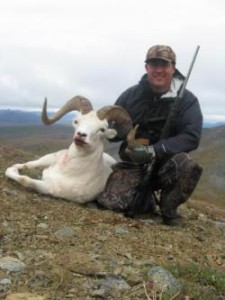Anglers, Hunters and Boaters Pay for Conservation
Now you know who pays for conservation
By Cliff Schleusner
from The Fishing Wire
All of these pursuits have something in common, aside from the obvious. As a hunter and angler and boater you are paying for conservation. Next time you gas up your boat, buy a spool of 10-lb test monofilament fishing line, or a box of bird load for your 12-gauge pump, keep this in mind: a portion of what you pull out of your wallet is invested back into conservation.
Here’s how. Two acts of Congress, laws originally enacted in 1937 and 1950, laid the path for a user pay-user benefit system where the end outcome is improved hunting and fishing and boating. While your hunting and fishing licenses help pay for the wonderful work performed by biologists, conservation officers, and support staff in you state game and fish department, a tax on your sporting goods takes your commitment to conservation a step further.
Manufacturers and importers of firearms, ammo, archery gear, boats and motors and fuel, and fishing gear pay excise taxes to the federal government. That tax is passed on to you in the price you pay at the cash register. That little bit extra is held in trust by the U.S. Fish and Wildlife Service’s Wildlife and Sport Fish Restoration Program. That money is reapportioned in grants back to state agencies, but with a catch; the money must be used on projects that benefit fish and wildlife in some measure, boating access or research and education.
These recent projects exemplify the benefits accrued to hunters and anglers and boaters in the Southwest.
Arizona:
Arizonans are rightfully proud of their world-class Ben Avery Shooting Facility in north Phoenix. More than 120,000 shooters of all ages use it each year. It is home to regional- and national-class shooting competitions. Hunters hone their skills there and young shooters might pull their first trigger on the firing line with trained safety officers nearby.
A new boat ramp, parking area and access road brought quality striped bass and white bass fishing within reach of anglers in the Agua Fria arm of Lake Pleasant after a seven-year closure. What is fish habitat is also attractive to nesting bald eagles in spring. To overcome a conflict in protecting the birds, the Arizona Game and Fish Department made the site accessible to anglers willing to travel to the remote area.
New Mexico:
Anglers and boaters should be pleased to know that Lake Roberts, nestled in the Gila National Forest, now has an improved dam and spillway. The renovated structure is more secure ensuring that fish habitat remains intact, and that anglers continue to enjoy quality trout fishing in the prettiest of places. The fishery is managed by the NMDGF.
Texas:
The Texas Parks and Wildlife Department (TPWD) used Wildlife and Sport Fish Restoration dollars at the Sea Center Texas, at Lake Jackson; CCA Marine Development Center, Corpus Christi; and the Perry R. Bass Marine Fisheries Research Station in Palacios, Texas. Scientists there research and raise red drum, spotted seatrout and southern flounder—sport fish species important to the economy and coastal ecology. The red drum population in Texas bays has rebounded to near-record highs. Red drum are stocked in nine bays along the Texas coast.
Anglers can get to those red drum easier, too, thanks to other work completed by TPWD. Fish cleaning stations, boat ramps, lighted parking areas and restrooms built on the Mission River and Copano Bay access points near Gulf waters improved boating.
Oklahoma:
The Oklahoma Department of Wildlife Conservation (ODWC) recently used Wildlife and Sport Fish Restoration dollars at Grand Lake O’ the Cherokees near Tulsa, improving boat ramps, docks, lighting and fish cleaning stations. It will be the site of the hugely popular Bassmaster Classic in 2016.
And there’s the Grady County Wildlife Management Area (WMA) near Rush Springs, Oklahoma. This year the ODWC built two ponds for fish and waterfowl. The 1,036-acre woodland and tall-grass prairie WMA already supports deer, turkey and rabbits. Public access was enhanced with a road and fencing.
All of these projects, making a real difference on the ground and in the water, were funded by the Wildlife and Sport Fish Restoration Program—that is, funded by you—hunters and anglers and boaters.
It’s your wildlife, your public lands. We as Americans are fortunate in that our natural resources are held in trust, for us, by us. I hope that you will be encouraged to get outdoors now and in the future and that you take some pleasure in knowing that you are paying your way. Take someone with you, too, so that you can have the full measure of joy outdoors.
Cliff Schleusner is an ardent angler and hunter, and Chief of the Wildlife and Sport Fish Restoration Program of the U.S. Fish and Wildlife Service – Southwest Region. He is based in Albuquerque, New Mexico. See www.fws.gov/southwest/federal_assistance

